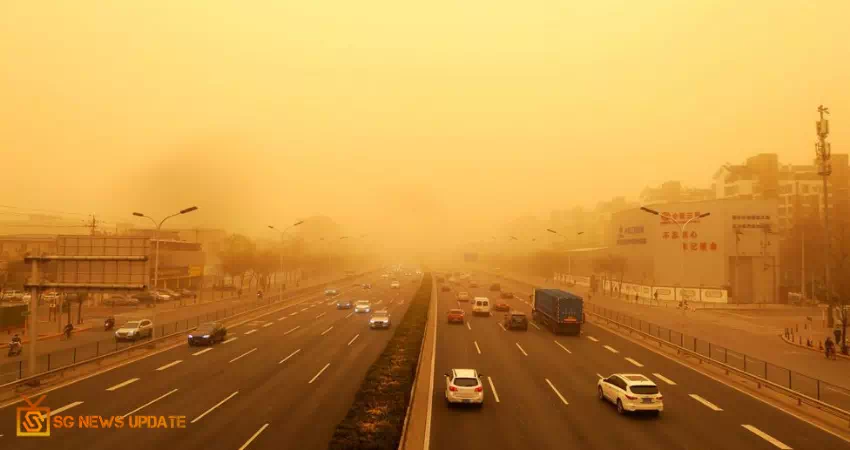
The Chinese capital was gagging on sand and dust on Monday, as the greatest dust storm in almost 10 years cleared over the city turning the skies a spooky shade of orange. Photographs from Beijing, home to 21.7 million occupants, show high rises and vehicles covered in a thick murkiness, with air quality lists recording a "perilous" rating and specialists encouraging inhabitants to remain inside.
Numerous workers kept on fighting the components, notwithstanding, strolling and walking through strong, sandy breezes. Visibility was so terrible in parts of the city that drivers needed to turn on their headlights even in the center of the day. "In certain spots, there are solid dust storms with visibility of under 500 meters (1,640 feet)," said the China Meteorological Administration in an articulation on Monday. "This is likewise the strongest residue and sand climate influencing China in just about 10 years."
Air quality in Beijing was at that point poor, inferable from significant degrees of contamination. At the point when the dust storm hit, the city's air quality plunged to perilous levels, as indicated by the World Air Quality Index. The list estimates the concentration of various poisons noticeable all around - the most significant being PM 2.5. This unsafe minute particulate matter is more modest than 2.5 micrometers in width, and is considered especially hazardous as it can stop profound into the lungs and pass into different organs and the circulation system.
Beijing estimated a limit of 655 micrograms for each cubic meter on Monday. The World Health Organization believes anything over 25 to be perilous.
The dust storm started in Mongolia, where six individuals have died, and 81 are missing, as indicated by Chinese state-run outlet The Paper. From Mongolia, the dust storm slowly moved toward the south. Beijing saw concentrations of the bigger PM 10 particles surpass 8,100 micrograms for each cubic meter as per the city's environmental checking center, provoking the Central Meteorological Observatory to give a yellow alarm for dust storms - the second level in a four-level shading coded climate cautioning framework.
Specialists encouraged general society to abstain from heading outside if conceivable, and the Beijing Municipal Commission of Education asked schools and instructive boards of trustees on Monday to suspend open air activities.
Dust storms used to be a standard event in spring. In earlier many years, each May saw at any rate two rounds of dust storms, as indicated by state-run Xinhua news organization. The recurrence and seriousness of dust storms was mostly because of dry spell, developing populace pressing factor and helpless advancement in revegetation, which caused fast desertification of land in the north and northwest.
Yet, dust storms have since diminished drastically; the yearly number of dust storm affected days in Beijing tumbled from a pinnacle of 26 during the 1950s to only three days after 2010, Xinhua announced.
Since 2000, the Chinese government has contributed billions of dollars toward dust storm counteraction. Specialists have dispatched different reforestation and biological tasks, and introduced satellites to screen dust storms and alert weather agencies early.
Dust storms have likewise hit northern Hebei and Shanxi territories, western Gansu, and central and western Inner Mongolia on Monday, Xinhua said. Different parts of the nation, including northern Xinjiang, are seeing undeniable degrees of wind blasts. The dust storms are relied upon to last through Tuesday.
Mongolia, which lies north of terrain China, is encountering dense cyclones, said the meteorological organization. The sand and dust from Mongolia have moved toward the east and toward the south over China's northern districts, conveyed by the cold high pressing factor at the rear of the typhoon.
Coming Soon...!
Comments (0)